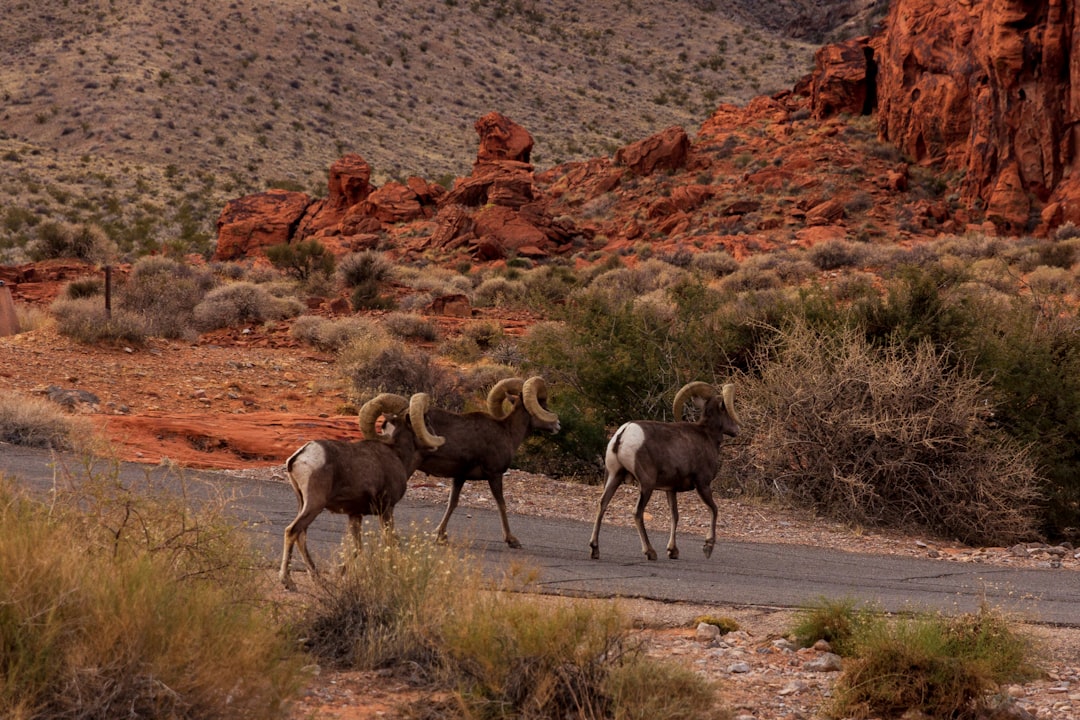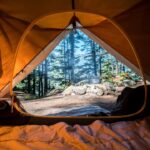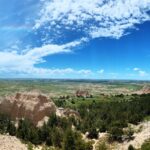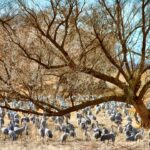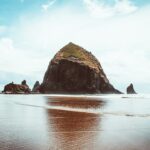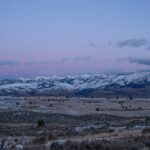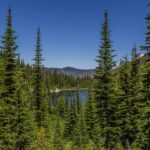Wildlife watching in national parks has become increasingly popular over the years. People from all over the world flock to these protected areas to catch a glimpse of some of the most magnificent creatures on Earth. From bears and wolves to birds and marine life, national parks offer a unique opportunity to observe wildlife in their natural habitats.
However, with the rise in popularity of wildlife watching comes the need for responsible practices. It is crucial for visitors to respect the wildlife and their habitats, ensuring that their presence does not disrupt or harm the animals in any way. Responsible wildlife watching is not only important for the well-being of the animals, but also for the preservation of these incredible ecosystems.
Best National Parks for Wildlife Viewing
1. Yellowstone National Park: Known as the “Serengeti of North America,” Yellowstone is home to a wide variety of wildlife, including grizzly bears, wolves, elk, and bison. The park’s vast size and diverse habitats make it an ideal destination for wildlife enthusiasts.
2. Grand Teton National Park: Located just south of Yellowstone, Grand Teton offers stunning views of the Teton Range and abundant wildlife. Visitors can spot moose, black bears, bald eagles, and even elusive mountain lions.
3. Everglades National Park: The largest subtropical wilderness in the United States, the Everglades is teeming with wildlife. From alligators and manatees to a variety of bird species, this park offers a unique opportunity to observe marine and terrestrial life.
4. Denali National Park: Located in Alaska, Denali is known for its vast wilderness and iconic wildlife. Visitors can spot grizzly bears, wolves, caribou, and Dall sheep against the backdrop of towering mountains.
5. Great Smoky Mountains National Park: With its lush forests and diverse ecosystems, the Great Smoky Mountains are home to a wide range of wildlife. Visitors can see black bears, white-tailed deer, and over 200 species of birds.
Wildlife Viewing Tips and Safety Guidelines
1. Respect wildlife and their habitats: It is important to remember that national parks are the homes of these animals. Visitors should observe from a distance and avoid disturbing or approaching the wildlife.
2. Keep a safe distance: It is crucial to maintain a safe distance from wildlife to ensure both their safety and yours. Use binoculars or a telephoto lens to get a closer look without intruding on their space.
3. Do not feed wildlife: Feeding wildlife can disrupt their natural behaviors and lead to dependency on humans for food. It can also be dangerous for both the animals and visitors.
4. Be aware of your surroundings: Wildlife can be unpredictable, so it is important to be aware of your surroundings at all times. Stay on designated trails, follow park regulations, and listen to park rangers for any safety advisories.
Wildlife Watching in Spring: What to Expect
Spring is an exciting time for wildlife watching in national parks. As the weather warms up, migratory birds begin to return, filling the air with their songs. This is also the time when many animals give birth to their young, providing visitors with the opportunity to witness adorable baby animals in their natural habitats.
Some of the best national parks to visit in the spring include:
– Great Smoky Mountains National Park: With its diverse range of ecosystems, this park offers a chance to see wildflowers in bloom and spot black bears and elk.
– Everglades National Park: Spring is the dry season in the Everglades, making it an ideal time to spot alligators, manatees, and a variety of bird species.
– Denali National Park: As the snow begins to melt, Denali comes alive with wildlife. Visitors may have the chance to see grizzly bears, moose, and caribou.
Summer Wildlife Watching: Where to Go
Summer is a popular time for wildlife watching in national parks, as the warmer weather allows for more outdoor activities. Many national parks have diverse wildlife populations, making them great destinations for summer wildlife viewing.
Some of the best national parks to visit in the summer include:
– Yellowstone National Park: With its vast size and diverse habitats, Yellowstone offers a wide range of wildlife viewing opportunities. Visitors can spot grizzly bears, wolves, and herds of bison.
– Grand Teton National Park: The summer months bring an abundance of wildlife to Grand Teton. Visitors can see moose, black bears, and a variety of bird species.
– Everglades National Park: Despite the hot and humid weather, the Everglades is still a great place for wildlife viewing in the summer. Alligators, manatees, and wading birds can be seen throughout the park.
When it comes to summer wildlife watching, it is important to keep in mind some safety precautions. Be aware of the heat and stay hydrated. Avoid approaching or disturbing wildlife, as they may be more active during this time of year.
Fall Wildlife Viewing: Top National Parks to Visit
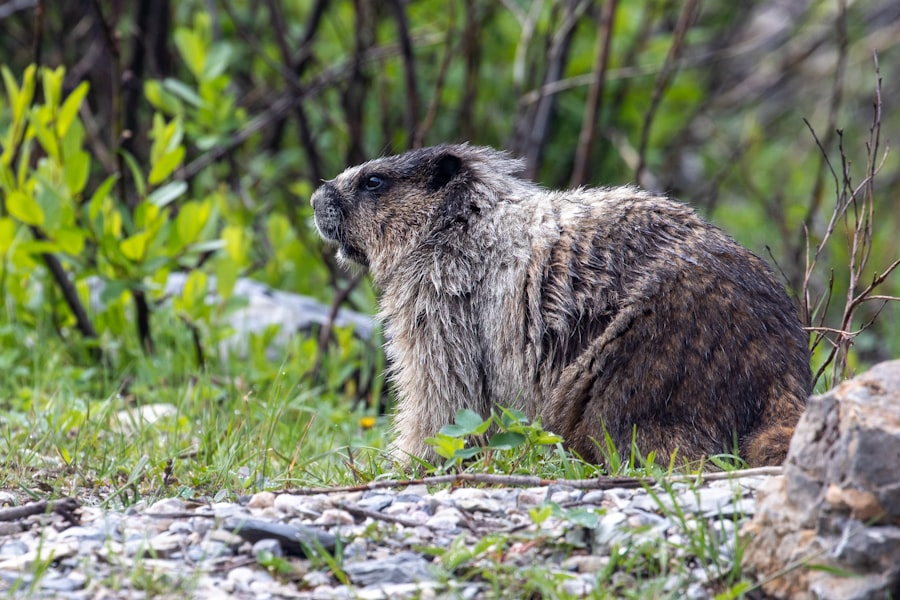
Fall is a beautiful time to visit national parks, as the leaves change colors and animals prepare for the winter months. Many animals also begin their migration during this time, providing visitors with unique opportunities to witness these natural phenomena.
Some of the best national parks to visit in the fall include:
– Great Smoky Mountains National Park: Known for its stunning fall foliage, this park offers breathtaking views and opportunities to spot black bears and white-tailed deer.
– Denali National Park: As the temperatures drop, Denali becomes a prime location for wildlife viewing. Visitors may have the chance to see moose, caribou, and Dall sheep against the backdrop of colorful fall foliage.
– Yellowstone National Park: Fall is a quieter time in Yellowstone, but it is still a great time to spot wildlife. Elk and bison are more active during this time, and visitors may even catch a glimpse of wolves or grizzly bears.
When viewing wildlife in the fall, it is important to be mindful of the changing weather conditions. Dress in layers and be prepared for colder temperatures. Respect wildlife and their habitats, as they are preparing for the winter months.
Winter Wildlife Watching: National Parks with Snowy Wildlife
Winter may not be the most popular time for wildlife watching in national parks, but it can offer unique opportunities to see animals in snowy landscapes. Some national parks are known for their winter wildlife populations and provide visitors with a chance to witness these incredible creatures in their winter habitats.
Some of the best national parks for winter wildlife watching include:
– Yellowstone National Park: Despite the cold temperatures, Yellowstone is still home to a variety of wildlife during the winter months. Visitors can see bison, elk, and even wolves against a snowy backdrop.
– Denali National Park: With its vast wilderness and snowy landscapes, Denali offers a unique opportunity to see animals such as moose, wolves, and Dall sheep in their winter habitats.
– Grand Teton National Park: The Teton Range covered in snow provides a stunning backdrop for winter wildlife viewing. Visitors may have the chance to spot moose, elk, and bald eagles.
When it comes to winter wildlife watching, it is important to dress warmly and be prepared for cold temperatures. Wildlife may be more difficult to spot during this time, so patience is key. Respect wildlife and their habitats, as they are adapting to survive in harsh winter conditions.
Bird Watching in National Parks: Top Destinations
Bird watching is a popular activity in national parks, as they provide diverse habitats for a wide range of bird species. From migratory birds to resident species, national parks offer unique opportunities to observe these beautiful creatures.
Some of the top national parks for bird watching include:
– Everglades National Park: With its diverse ecosystems, the Everglades is a haven for bird species. Visitors can spot herons, egrets, roseate spoonbills, and even the elusive Florida scrub-jay.
– Great Smoky Mountains National Park: This park is home to over 200 species of birds, making it a great destination for bird watching. Visitors may see warblers, vireos, and woodpeckers.
– Yellowstone National Park: Despite being known for its large mammals, Yellowstone is also a great place for bird watching. Visitors can spot bald eagles, ospreys, and a variety of waterfowl.
When it comes to bird watching in national parks, the best time of year to go depends on the species you are interested in. Spring and fall are popular times for migratory birds, while summer is a great time to see resident species. Be sure to bring binoculars and a field guide to help with identification.
Marine Wildlife Watching: National Parks with Ocean Life
National parks are not limited to terrestrial wildlife; many also offer opportunities to observe marine life. From whales and dolphins to sea turtles and seals, these parks provide a unique chance to witness the wonders of the ocean.
Some of the top national parks for marine wildlife watching include:
– Channel Islands National Park: Located off the coast of California, this park is known for its diverse marine life. Visitors can see whales, dolphins, sea lions, and a variety of seabirds.
– Glacier Bay National Park: Located in Alaska, Glacier Bay offers stunning views of glaciers and an abundance of marine life. Visitors may spot humpback whales, orcas, sea otters, and harbor seals.
– Biscayne National Park: Located in Florida, Biscayne is home to a diverse range of marine life. Visitors can snorkel or dive to see colorful coral reefs, tropical fish, and even manatees.
When it comes to marine wildlife watching, the best time of year to go depends on the species you are interested in. Whales are often seen during their migration seasons, while sea turtles may be more active during nesting season. Be sure to follow park regulations and guidelines for marine wildlife viewing.
Endangered Species in National Parks: Where to Spot Them
National parks play a crucial role in the conservation of endangered species. These protected areas provide a safe haven for these animals and help ensure their survival for future generations. Visitors to national parks have the opportunity to spot some of these endangered species in their natural habitats.
Some national parks known for their populations of endangered species include:
– Everglades National Park: The Everglades is home to several endangered species, including the Florida panther, American crocodile, and West Indian manatee.
– Great Smoky Mountains National Park: This park is home to the endangered red-cockaded woodpecker, as well as the threatened Carolina northern flying squirrel.
– Channel Islands National Park: The Channel Islands are home to several endangered species, including the island fox, California least tern, and Guadalupe fur seal.
When it comes to spotting endangered species in national parks, it is important to remember that these animals are protected. Respect their habitats and observe from a safe distance. Report any sightings to park rangers or wildlife officials to contribute to conservation efforts.
Wildlife watching in national parks offers a unique opportunity to observe some of the most incredible creatures on Earth. However, it is important to practice responsible wildlife watching to ensure the well-being of the animals and the preservation of these ecosystems. By respecting wildlife and their habitats, keeping a safe distance, and following park regulations, visitors can enjoy the beauty of nature while minimizing their impact.
Whether it’s spring, summer, fall, or winter, national parks offer a variety of wildlife viewing opportunities throughout the year. From migratory birds and baby animals in the spring to snowy landscapes and winter wildlife in the colder months, there is always something to see. Bird watching and marine wildlife watching are also popular activities in national parks, providing unique opportunities to observe diverse species.
National parks also play a crucial role in the conservation of endangered species. By visiting these parks and supporting their conservation efforts, visitors can contribute to the protection of these incredible creatures for future generations. So grab your binoculars and camera, and head to a national park for an unforgettable wildlife watching experience.
If you’re an avid wildlife enthusiast and love exploring national parks, you won’t want to miss this article on “Where to See Wildlife in the National Parks Throughout the Year.” It provides valuable insights and recommendations on the best times and locations to spot various animals in their natural habitats. For more exciting adventures and overlanding tips, check out Overlanding America’s website. And if you have any questions or want to plan your next wildlife expedition, don’t hesitate to get in touch with their knowledgeable team through their contact page. Happy exploring! Contact page
FAQs
What is the article about?
The article is about the best places to see wildlife in the national parks throughout the year.
What are national parks?
National parks are protected areas of land that are managed by the government to preserve natural resources and wildlife.
What kind of wildlife can be seen in national parks?
National parks are home to a wide variety of wildlife, including bears, wolves, elk, moose, bison, deer, coyotes, foxes, eagles, and many other species.
When is the best time to see wildlife in national parks?
The best time to see wildlife in national parks varies depending on the species and the park. Generally, early morning and late afternoon are the best times to see wildlife, and different species are more active during different seasons.
What should I do if I encounter wildlife in a national park?
If you encounter wildlife in a national park, it is important to keep a safe distance and not approach or feed the animals. It is also important to follow any park regulations or guidelines for interacting with wildlife.
Are there any safety precautions I should take when viewing wildlife in national parks?
Yes, it is important to take safety precautions when viewing wildlife in national parks. This includes keeping a safe distance, staying on designated trails, and carrying bear spray or other deterrents if necessary. It is also important to be aware of any park regulations or guidelines for viewing wildlife.
